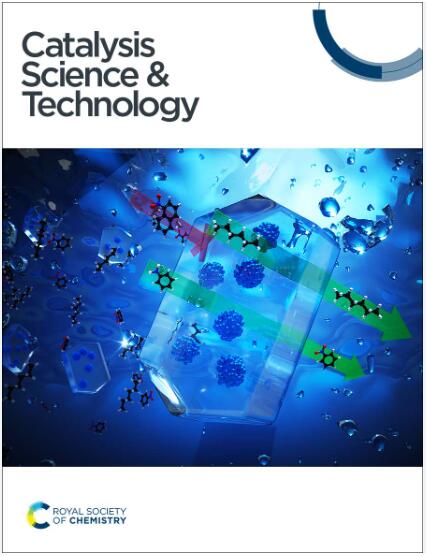甲醇脱水制二甲醚†的实验与计算优化
IF 4.4
3区 化学
Q2 CHEMISTRY, PHYSICAL
引用次数: 0
摘要
要实现国际海事组织到2050年的净零目标,就必须用可持续的替代品取代海洋化石燃料,如二甲醚(DME)。掺硅磷酸铝(SAPO)固体酸催化剂,尤其是弱酸性的SAPO-11,能够催化甲醇选择性脱水制二甲醚,且稳定性优异。在此,我们提出了一个结合实验、计算流体动力学和实验设计的研究,以提高催化剂效率和二甲醚的生产,并支持扩大规模的努力。采用四维设计表面,发现较长的催化剂床和较高的操作温度可以提高二甲醚的收率,其中催化剂床长对二甲醚收率的影响更为明显。相反,使用高浓度的甲醇反应物会产生有害的影响,这是由于SAPO-11催化剂中活性位点的饱和。因此,通过优化SAPO-11中酸位的数量和反应参数,可以改善工业规模上的单道转化率和催化剂寿命。本文章由计算机程序翻译,如有差异,请以英文原文为准。
Experimental and computational optimisation of methanol dehydration to dimethyl ether†
Meeting the International Maritime Organization's net-zero target by 2050 necessitates the replacement of marine fossil fuels with sustainable alternatives, such as dimethyl ether (DME). Silicon-doped aluminophosphate (SAPO) solid acid catalysts, particularly the weakly-acidic SAPO-11, can catalyse the selective dehydration of methanol-to-DME with exceptional stability. Herein, we present a combined experimental, computational fluid dynamics, and design of experiments study to augment catalyst efficiency and DME production, and to support scale-up endeavours. Using a four-dimensional design surface, it was found that longer catalyst beds and higher operating temperature increase DME yields, with the catalyst bed length having a more pronounced influence. In contrast, the use of highly concentrated methanol reactant streams had a detrimental effect and this was ascribed to a saturation of the active sites in the SAPO-11 catalyst. Improved single-pass conversions and catalyst longevity on industrial scales can thus be achieved by optimising both the number of acid sites in SAPO-11 and reaction parameters.
求助全文
通过发布文献求助,成功后即可免费获取论文全文。
去求助
来源期刊

Catalysis Science & Technology
CHEMISTRY, PHYSICAL-
CiteScore
8.70
自引率
6.00%
发文量
587
审稿时长
1.5 months
期刊介绍:
A multidisciplinary journal focusing on cutting edge research across all fundamental science and technological aspects of catalysis.
Editor-in-chief: Bert Weckhuysen
Impact factor: 5.0
Time to first decision (peer reviewed only): 31 days
 求助内容:
求助内容: 应助结果提醒方式:
应助结果提醒方式:


